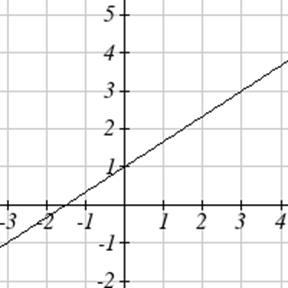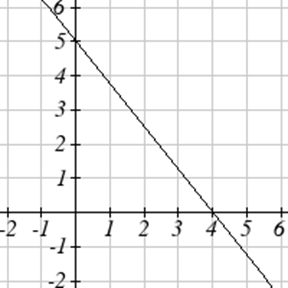1.3.E: Exercises
- Page ID
- 157144
\( \newcommand{\vecs}[1]{\overset { \scriptstyle \rightharpoonup} {\mathbf{#1}} } \)
\( \newcommand{\vecd}[1]{\overset{-\!-\!\rightharpoonup}{\vphantom{a}\smash {#1}}} \)
\( \newcommand{\id}{\mathrm{id}}\) \( \newcommand{\Span}{\mathrm{span}}\)
( \newcommand{\kernel}{\mathrm{null}\,}\) \( \newcommand{\range}{\mathrm{range}\,}\)
\( \newcommand{\RealPart}{\mathrm{Re}}\) \( \newcommand{\ImaginaryPart}{\mathrm{Im}}\)
\( \newcommand{\Argument}{\mathrm{Arg}}\) \( \newcommand{\norm}[1]{\| #1 \|}\)
\( \newcommand{\inner}[2]{\langle #1, #2 \rangle}\)
\( \newcommand{\Span}{\mathrm{span}}\)
\( \newcommand{\id}{\mathrm{id}}\)
\( \newcommand{\Span}{\mathrm{span}}\)
\( \newcommand{\kernel}{\mathrm{null}\,}\)
\( \newcommand{\range}{\mathrm{range}\,}\)
\( \newcommand{\RealPart}{\mathrm{Re}}\)
\( \newcommand{\ImaginaryPart}{\mathrm{Im}}\)
\( \newcommand{\Argument}{\mathrm{Arg}}\)
\( \newcommand{\norm}[1]{\| #1 \|}\)
\( \newcommand{\inner}[2]{\langle #1, #2 \rangle}\)
\( \newcommand{\Span}{\mathrm{span}}\) \( \newcommand{\AA}{\unicode[.8,0]{x212B}}\)
\( \newcommand{\vectorA}[1]{\vec{#1}} % arrow\)
\( \newcommand{\vectorAt}[1]{\vec{\text{#1}}} % arrow\)
\( \newcommand{\vectorB}[1]{\overset { \scriptstyle \rightharpoonup} {\mathbf{#1}} } \)
\( \newcommand{\vectorC}[1]{\textbf{#1}} \)
\( \newcommand{\vectorD}[1]{\overrightarrow{#1}} \)
\( \newcommand{\vectorDt}[1]{\overrightarrow{\text{#1}}} \)
\( \newcommand{\vectE}[1]{\overset{-\!-\!\rightharpoonup}{\vphantom{a}\smash{\mathbf {#1}}}} \)
\( \newcommand{\vecs}[1]{\overset { \scriptstyle \rightharpoonup} {\mathbf{#1}} } \)
\( \newcommand{\vecd}[1]{\overset{-\!-\!\rightharpoonup}{\vphantom{a}\smash {#1}}} \)
\(\newcommand{\avec}{\mathbf a}\) \(\newcommand{\bvec}{\mathbf b}\) \(\newcommand{\cvec}{\mathbf c}\) \(\newcommand{\dvec}{\mathbf d}\) \(\newcommand{\dtil}{\widetilde{\mathbf d}}\) \(\newcommand{\evec}{\mathbf e}\) \(\newcommand{\fvec}{\mathbf f}\) \(\newcommand{\nvec}{\mathbf n}\) \(\newcommand{\pvec}{\mathbf p}\) \(\newcommand{\qvec}{\mathbf q}\) \(\newcommand{\svec}{\mathbf s}\) \(\newcommand{\tvec}{\mathbf t}\) \(\newcommand{\uvec}{\mathbf u}\) \(\newcommand{\vvec}{\mathbf v}\) \(\newcommand{\wvec}{\mathbf w}\) \(\newcommand{\xvec}{\mathbf x}\) \(\newcommand{\yvec}{\mathbf y}\) \(\newcommand{\zvec}{\mathbf z}\) \(\newcommand{\rvec}{\mathbf r}\) \(\newcommand{\mvec}{\mathbf m}\) \(\newcommand{\zerovec}{\mathbf 0}\) \(\newcommand{\onevec}{\mathbf 1}\) \(\newcommand{\real}{\mathbb R}\) \(\newcommand{\twovec}[2]{\left[\begin{array}{r}#1 \\ #2 \end{array}\right]}\) \(\newcommand{\ctwovec}[2]{\left[\begin{array}{c}#1 \\ #2 \end{array}\right]}\) \(\newcommand{\threevec}[3]{\left[\begin{array}{r}#1 \\ #2 \\ #3 \end{array}\right]}\) \(\newcommand{\cthreevec}[3]{\left[\begin{array}{c}#1 \\ #2 \\ #3 \end{array}\right]}\) \(\newcommand{\fourvec}[4]{\left[\begin{array}{r}#1 \\ #2 \\ #3 \\ #4 \end{array}\right]}\) \(\newcommand{\cfourvec}[4]{\left[\begin{array}{c}#1 \\ #2 \\ #3 \\ #4 \end{array}\right]}\) \(\newcommand{\fivevec}[5]{\left[\begin{array}{r}#1 \\ #2 \\ #3 \\ #4 \\ #5 \\ \end{array}\right]}\) \(\newcommand{\cfivevec}[5]{\left[\begin{array}{c}#1 \\ #2 \\ #3 \\ #4 \\ #5 \\ \end{array}\right]}\) \(\newcommand{\mattwo}[4]{\left[\begin{array}{rr}#1 \amp #2 \\ #3 \amp #4 \\ \end{array}\right]}\) \(\newcommand{\laspan}[1]{\text{Span}\{#1\}}\) \(\newcommand{\bcal}{\cal B}\) \(\newcommand{\ccal}{\cal C}\) \(\newcommand{\scal}{\cal S}\) \(\newcommand{\wcal}{\cal W}\) \(\newcommand{\ecal}{\cal E}\) \(\newcommand{\coords}[2]{\left\{#1\right\}_{#2}}\) \(\newcommand{\gray}[1]{\color{gray}{#1}}\) \(\newcommand{\lgray}[1]{\color{lightgray}{#1}}\) \(\newcommand{\rank}{\operatorname{rank}}\) \(\newcommand{\row}{\text{Row}}\) \(\newcommand{\col}{\text{Col}}\) \(\renewcommand{\row}{\text{Row}}\) \(\newcommand{\nul}{\text{Nul}}\) \(\newcommand{\var}{\text{Var}}\) \(\newcommand{\corr}{\text{corr}}\) \(\newcommand{\len}[1]{\left|#1\right|}\) \(\newcommand{\bbar}{\overline{\bvec}}\) \(\newcommand{\bhat}{\widehat{\bvec}}\) \(\newcommand{\bperp}{\bvec^\perp}\) \(\newcommand{\xhat}{\widehat{\xvec}}\) \(\newcommand{\vhat}{\widehat{\vvec}}\) \(\newcommand{\uhat}{\widehat{\uvec}}\) \(\newcommand{\what}{\widehat{\wvec}}\) \(\newcommand{\Sighat}{\widehat{\Sigma}}\) \(\newcommand{\lt}{<}\) \(\newcommand{\gt}{>}\) \(\newcommand{\amp}{&}\) \(\definecolor{fillinmathshade}{gray}{0.9}\)1.3 Exercises
A town's population has been growing linearly. In 2003, the population was 45,000, and the population has been growing by 1700 people each year. Write an equation, \(P(t)\), for the population \(t\) years after 2003.
A town's population has been growing linearly. In 2005, the population was 69,000, and the population has been growing by 2500 people each year. Write an equation, \(P(t)\), for the population \(t\) years after 2005.
Timmy goes to the fair with $40. Each ride costs $2. How much money will he have left after riding \(n\) rides?
At noon, a barista notices she has $20 in her tip jar. If she makes an average of $0.50 from each customer, how much will she have in her tip jar if she serves \(n\) more customers during her shift?
A phone company charges for service according to the formula: \(C(n) = 24+0.1n\), where \(n\) is the number of minutes talked, and \(C(n)\) is the monthly charge, in dollars.
Find and interpret the rate of change and initial value.
A phone company charges for service according to the formula: \(C(n) = 26+0.04n\), where \(n\) is the number of minutes talked, and \(C(n)\) is the monthly charge, in dollars.
Find and interpret the rate of change and initial value.
Given each set of information, find a linear equation satisfying the conditions, if possible.
| 7. \(f(-5) = -4\), and \(f(5)=2\) | 8. \(f(-1)=4\), and \(f(5)=1\) |
| 9. Passes through (2,4) and (4,10) | 10. Passes through (1, 5) and (4, 11) |
| 11. Passes through (-1,4) and (5, 2) | 12. Passes through (-2, 8) and (4, 6) |
| 13. \(x\) intercept at (-2, 0) and \(y\) intercept at (0, -3) | 14. \(x\) intercept at (-5, 0) and \(y\) intercept at (0, 4) |
Find an equation for the function graphed.


A clothing business finds there is a linear relationship between the number of shirts, \(n\), it can sell and the price, \(p\), it can charge per shirt. In particular, historical data shows that 1000 shirts can be sold at a price of $30, while 3000 shirts can be sold at a price of $22. Find a linear equation in the form \(p=mn+b\) that gives the price \(p\) they can charge for \(n\) shirts.
A farmer finds there is a linear relationship between the number of bean stalks, \(n\), she plants and the yield, \(y\), each plant produces. When she plants 30 stalks, each plant yields 30 oz of beans. When she plants 34 stalks, each plant produces 28 oz of beans. Find a linear relationships in the form \(y=mn+b\) that gives the yield when \(n\) stalks are planted.
Match each linear equation with its graph
| 19. \(f(x) = -x-1\) |
| 20. \(f(x) = -2x-1\) |
| 21. \(f(x) = -\frac{1}{2}x-1\) |
| 22. \(f(x) = 2\) |
| 23. \(f(x) = 2+x\) |
| 24. \(f(x) = 3x+2\) |
Sketch the graph of each equation
| 25. \(f(x) = -2x-1\) | 26. \(g(x) = -3x+2\) |
| 27. \(h(x)=\frac{1}{3}x+2\) | 28. \(k(x) = \frac{2}{3}x-3\) |
Find the point at which the line \(f(x) = -2x-1\) intersects the line \(g(x)=-x\)
Find the point at which the line \(f(x)=2x+5\) intersects the line \(g(x)=-3x-5\)
A car rental company offers two plans for renting a car.
Plan A: 30 dollars per day and 18 cents per mile
Plan B: 50 dollars per day with free unlimited mileage
How many miles would you need to drive for plan B to save you money?
A cell phone company offers two data options for its prepaid phones
Pay per use: $0.002 per Kilobyte (KB) used
Data Package: $5 for 5 Megabytes (5120 Kilobytes) + $0.002 per addition KB
Assuming you will use less than 5 Megabytes, under what circumstances will the data package save you money?
The Federal Helium Reserve held about 16 billion cubic feet of helium in 2010, and is being depleted by about 2.1 billion cubic feet each year.
- Give a linear equation for the remaining federal helium reserves, \(R\), in terms of \(t\), the number of years since 2010.
- In 2015, what will the helium reserves be?
- If the rate of depletion doesn’t change, when will the Federal Helium Reserve be depleted?
Suppose the world's current oil reserves are 1820 billion barrels. If, on average, the total reserves is decreasing by 25 billion barrels of oil each year:
- Give a linear equation for the remaining oil reserves, \(R\), in terms of \(t\), the number of years since now.
- Seven years from now, what will the oil reserves be?
- If the rate of depletion isn’t change, when will the world’s oil reserves be depleted?


